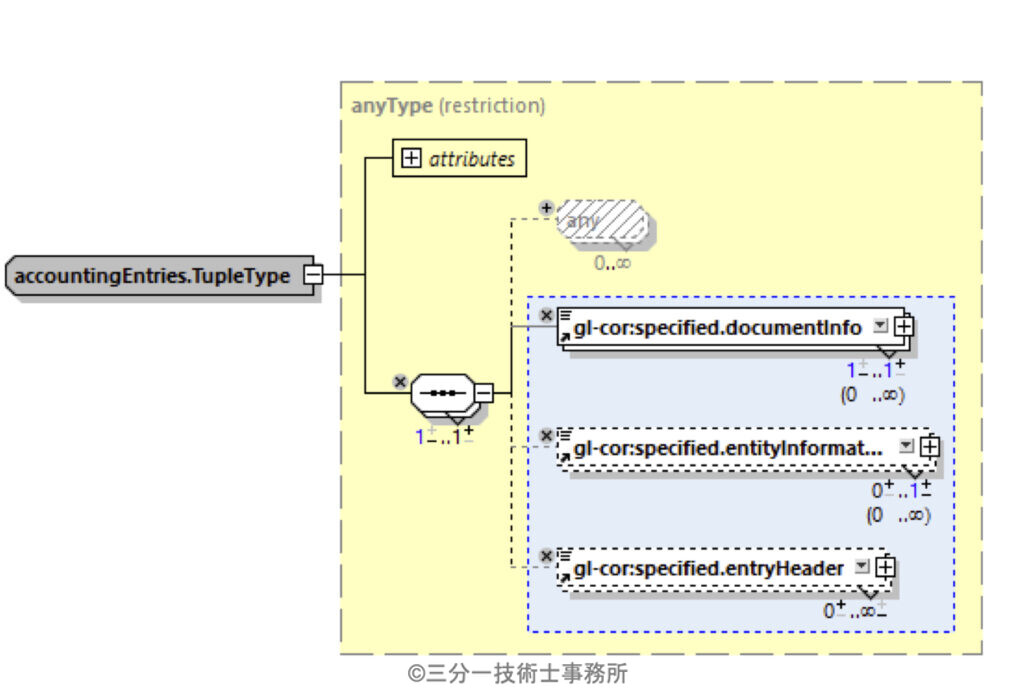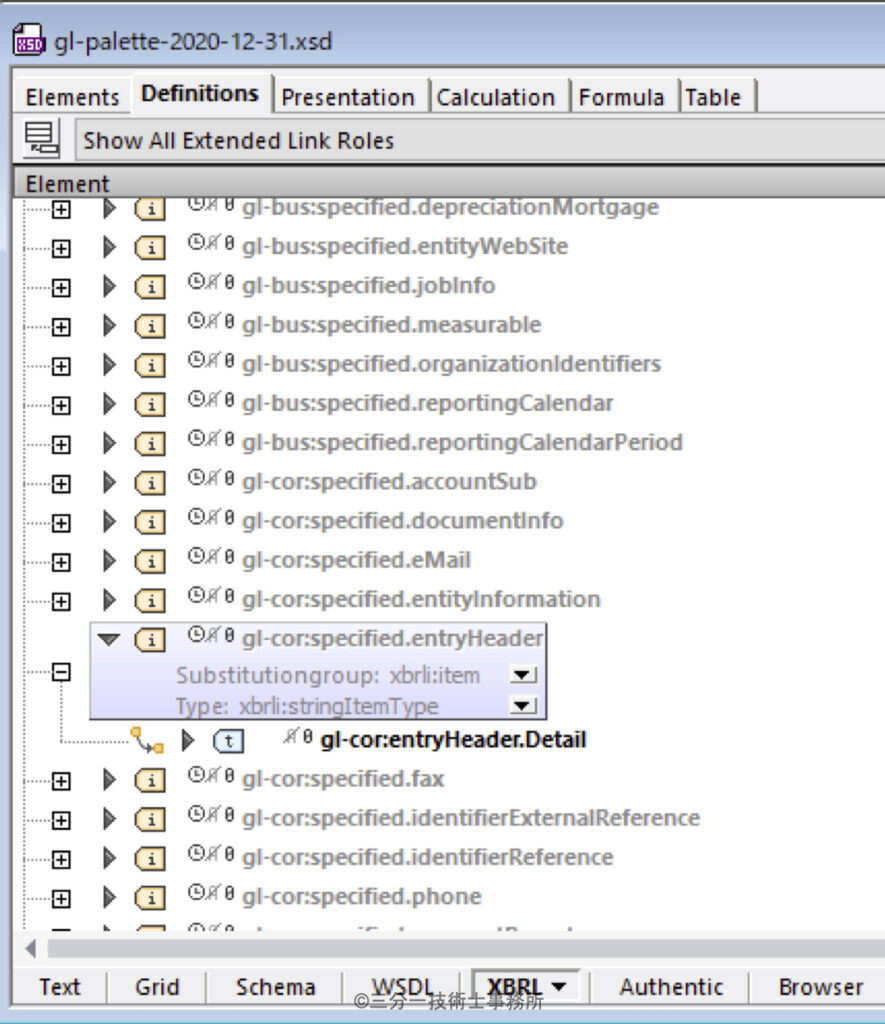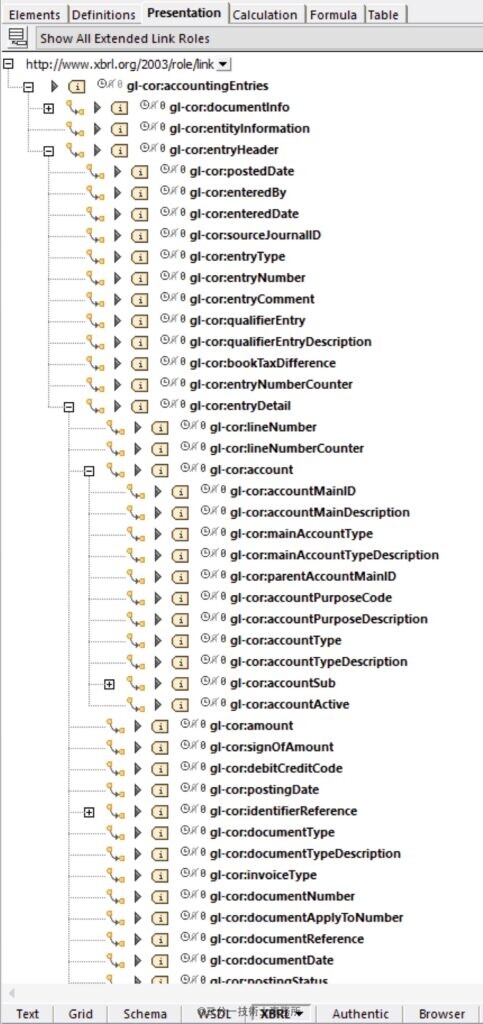Views: 75
UN/CEFACT Core Component Technical Specification(CCTS)
I will re-post the contents introduced in ISO 21378 Audit data collection data model definition based on UN/CEFACT CCTS and comparison with other standards including XBRL GL.
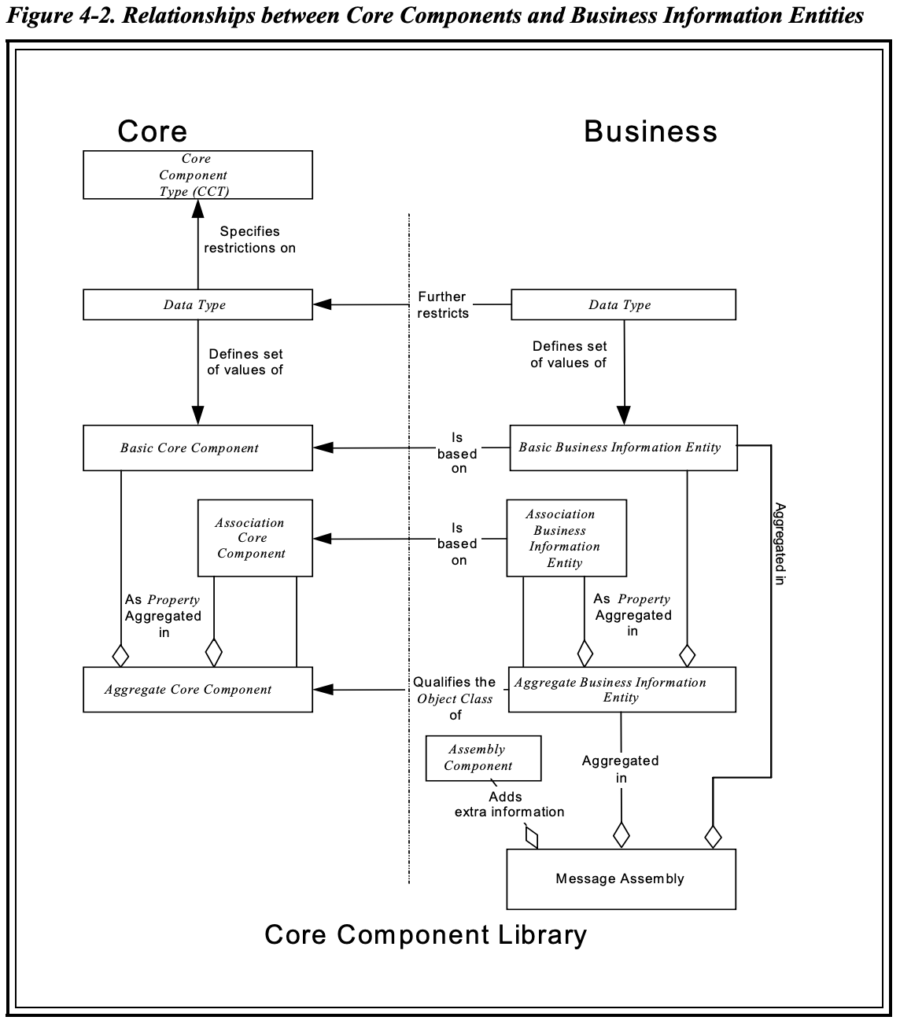
Association Business Information Entity defines Aggregation in CCTS. Association is required to define Audit data collection data model.
[Definition]
Business Information Entity (BIE)
A piece of business data or a group of pieces of business data with a unique Business
Semantic definition. A Business Information Entity can be a Basic Business Information
Entity (BBIE), an Association Business Information Entity (ASBIE), or an Aggregate
Business Information Entity (ABIE).[Definition]
Basic Business Information Entity (BBIE)
A Business Information Entity that represents a singular business characteristic of a
specific Object Class in a specific Business Context. It has a unique Business Semantic
definition. A Basic Business Information Entity represents a Basic Business Information
Entity Property and is therefore linked to a Data Type, which describes it values. A Basic
Business Information Entity is derived from a Basic Core Component.[Definition]
Association Business Information Entity (ASBIE)
A Business Information Entity that represents a complex business characteristic of a
specific Object Class in a specific Business Context. It has a unique Business Semantic
definition. An Association Business Information Entity represents an Association
Business Information Entity Property and is associated to an Aggregate Business
Information Entity, which describes its structure. An Association Business Information
Entity is derived from an Association Core Component.[Definition]
Aggregate Business Information Entity (ABIE)
A collection of related pieces of business information that together convey a distinct
business meaning in a specific Business Context. Expressed in modelling terms, it is the
representation of an Object Class, in a specific Business Context.[Note]
The term Core Component is used as a generic term that encompasses Basic Core
Components, Association Core Components, Aggregate Core Components, and their
associated Core Component Types. Equally, the term Business Information Entity is used
as a generic term encompassing Basic Business Information Entities, Association
Business Information Entities, and Aggregate Business Information Entities.
Objective: Improve transparency and extensibility by expressing CCTS structure in XBRL 2.1
Tuple child of tuple does not include child tuple
XBRL Global Ledger has the flexibility of expressing data with a free combination of modules, but due to the limitations of XML Schema, it cannot be said that it has high extensibility. In the conventional XML Schema definition, the nesting structure is like a Russian doll that directly refers to and defines tuples defined in Complex Content that defines tuples.
Therefore, to parse the file instance documents with this structure, only a normal XML parser that interprets an XML schema was necessary, but when verifying a large number of instance documents, each document should be parsed, decomposed, and then processed. The next step is the process of verifying the relationship between them. It is difficult to verify the relationship between the reported instance documents as it is, and it becomes a black box that processes according to each request in the imported application, and transparency is not high.
The structureBRL GL is modified for the purpose of making it highly transparent by utilizing the formula link base and table link base. In this case I made use of Typed Dimension to express header and detail line item records.
It is verified whether the global standard specification data can be expressed by defining the above aggregated business information item (ABIE) with a tuple and expressing the related business information item (ASBIE) with a definition link (requires-element).
Note: The files can be found at GitHub.
XBRL Essentials
instance document
An instance document is a collection of facts that together make up a business report. At a technical level an instance document is an XML document with a root element of <xbrli:xbrl>.Fact
A fact is an individual piece of information in a report. For example, reporting that profit at Acme Inc. in 2013 was $10m would be a fact. The fact is represented by reporting a value of 10m against a concept representing “Profit”, and associating it with contextual information representing the units (dollars), the period (2013), and the entity (“Acme Inc.”). At a technical level, facts are represented by elements in an instance document.Extensibility
One of the challenges of business reporting is that in many domains, the underlying reporting standards allow considerable flexibility in exactly what is reported, typically based on what is material to the reporting entity. This makes it impossible to create a single taxonomy that enumerates all concepts and dimensions that might be required by all reporting entities.
XBRL has been designed to allow taxonomies to be extended, allowing taxonomies to be tailored to meet specific reporting requirements. For example, international taxonomies may be extended by national regulators or large enterprises. In some cases, particularly for filings by listed companies controlled by securities regulators, individual filers are permitted to provide their own extension taxonomies, in order to accurately model specific reporting needs.
Since the current XBRL GL is mainly composed of XML Schema, it responds to various requests with a combination of modules, but when compared with financial reports, the extensibility characteristic of XBRL is poor.
We will verify the combination of tuple and linkbase in order to make it expandable using the linkbase of XBRL 2.1.

In this verification, the children of tuples are not allowed to be tuples, which is the form of Bag of facts, which is a feature of XBRL instance documents.
In the above figure, ASBIE(item) is the item specified.D, and ABIE referenced by ASBIE is the tuple D.Detail. XBRL 2.1 Definition The structure is defined using the linkbase (requires-element), and the XBRL instance document is expressed as a set of facts.
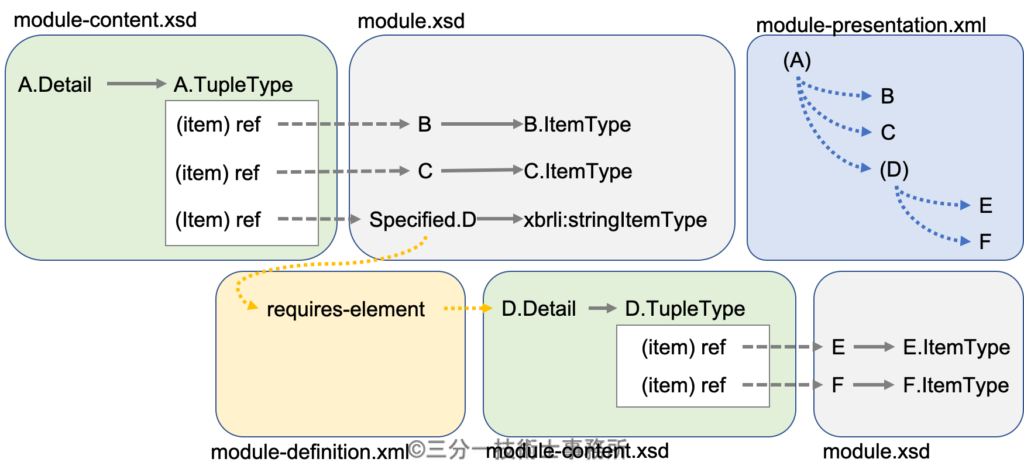
DTS
The current taxonomy divides the schema file that defines each module into two to facilitate the palette definition. This time as well, the schema files were placed in two groups.
The files being testes are XBRL-GL-WD-2020-12-31_07-21.zip .
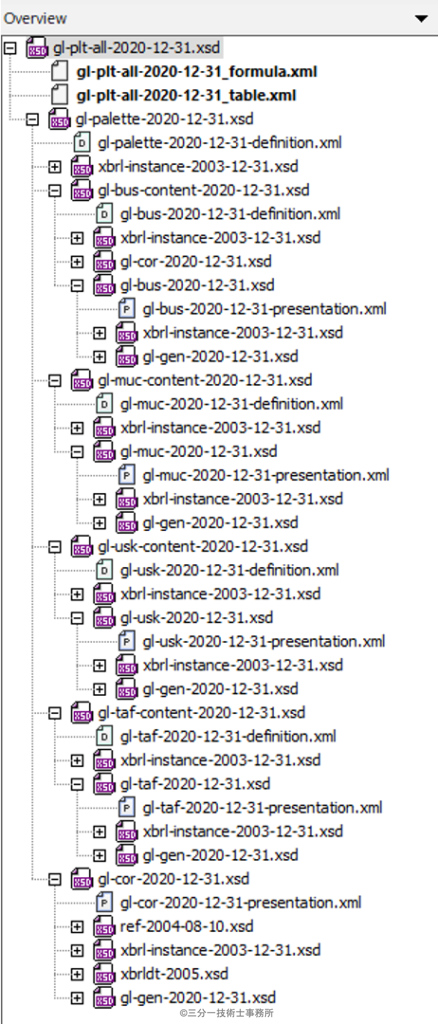
Tuple definition
Definition linkbase
Presentation linkbase
Proof-of-concept implementation trial of international standard data formats
1 XBRL 2.1 taxonomy
UN/CEFACT Core Component Technical Specification(CCTS)/a>
Objective: Improve transparency and extensibility by expressing CCTS structure in XBRL 2.1
Tuple child of tuple does not include child tuple
DTS
Tuple definition
Definition linkbase
Presentation linkbase
2 XBRL 2.1 instance document
Implement definition linkbase (requires-element) relationship using typed dimension
xbrldt:dimensionItem definition in taxonomy document
xbrli:context definition in instance document
Instance document
Execution result of formula linkbase
3 XBRL 2.1 formula
Definition
Execution result of formula linkbase
4 XBRL 2.1 table linkbase [in trial]
Definition
Execution result/a>
5 XBRL 2.1 without child tuple1 [in trial]
Definition
Instance document
Execution result

